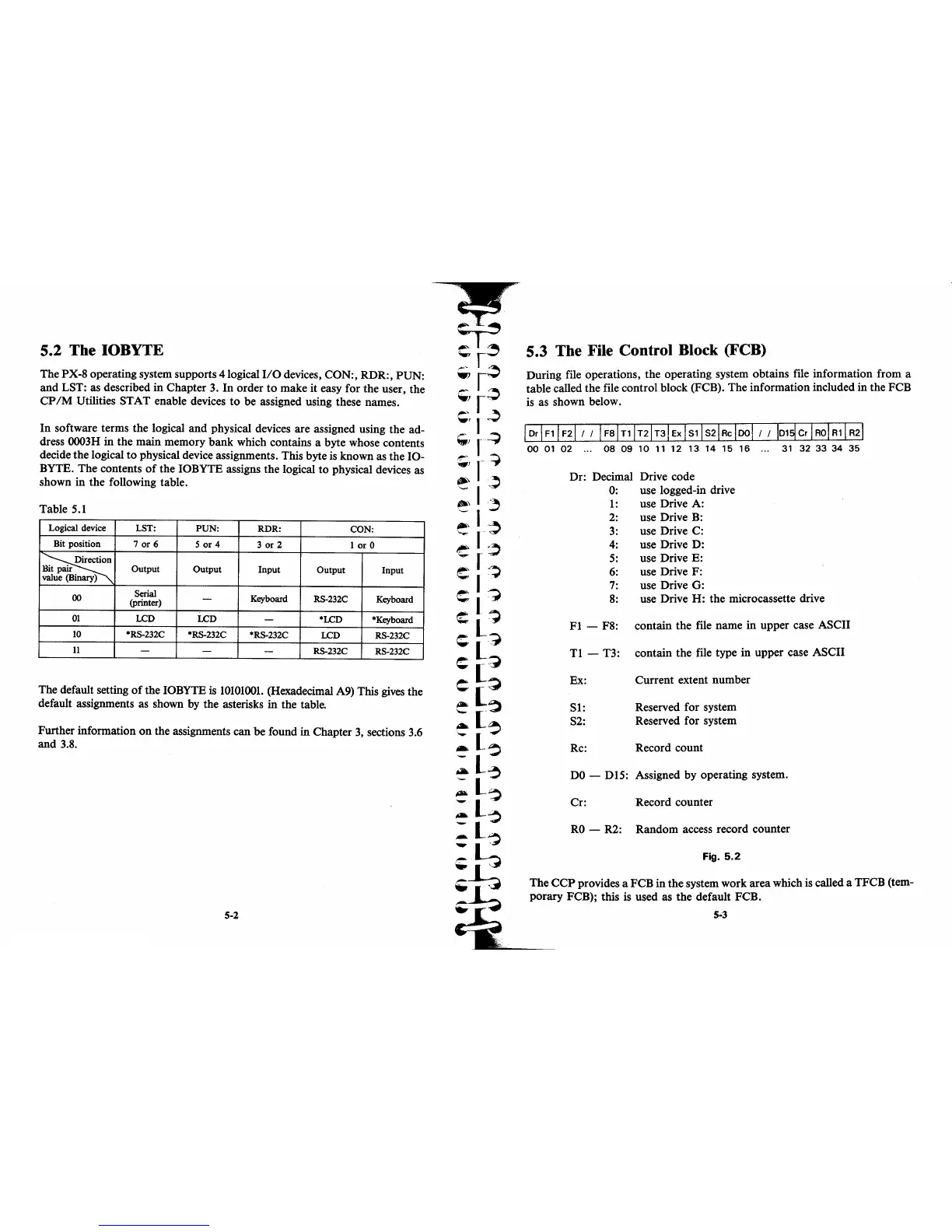5.2 The IOBYTE
The PX-8 operating system supports 4 logical
I/O
devices, CON:, RDR:, PUN:
and LST: as described in Chapter 3.
In
order
to
make it easy for the user, the
CP/M
Utilities STAT enable devices to be assigned using these names.
In software terms the logical and physical devices are assigned using the ad-
dress 0003H in the main memory bank which contains a byte whose contents
decide the logical
to
physical device assignments. This byte
is
known as the
10-
BYTE. The contents
of
the IOBYTE assigns the logical
to
physical devices as
shown in the following table.
Table 5.1
Logical device LST:
PUN: RDR: CON:
Bit position 7
or
6
5
or
4 3
or
2
lor
0
~
Bit pair Output
Output
Input
Output
Input
value (Binary)
00
Serial
Keyboard RS-232C
Keyboard
(printer)
-
01
LCD LCD
-
*LCD *Keyboard
10
*RS-232C *RS-232C *RS-232C LCD RS-232C
11
- -
-
RS-232C RS-232C
The default setting
of
the IOBYTE
is
10101001.
(Hexadecimal A9) This
gives
the
default assignments as shown
by
the asterisks in the table.
Further information
on
the assignments can be found in Chapter
3,
sections 3.6
and
3.8.
5-2
5.3 The File Control Block (FCB)
During file operations, the operating system obtains file information from a
table called the file control block (FCB). The information included in the FCB
is as shown below.
Dr: Decimal
0:
1:
2:
3:
4:
5:
6:
7:
8:
Drive code
use logged-in drive
use Drive A:
use Drive
B:
use Drive C:
use Drive D:
use Drive E:
use Drive F:
use Drive G:
use Drive
H:
the microcassette drive
F1
- F8: contain the file name in upper case ASCII
T1
- T3: contain the file type in upper case ASCII
Ex: Current extent number
Sl:
Reserved for system
S2:
Reserved for system
Rc: Record count
DO
- DIS: Assigned by operating system.
Cr: Record counter
RO
- R2: Random access record counter
Fig.
5.2
The
CCP
provides a FCB in the system work area which
is
called a TFCB (tem-
porary FCB); this is used as the default FCB.
5-3
